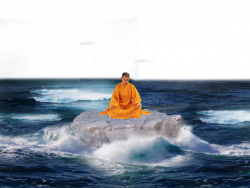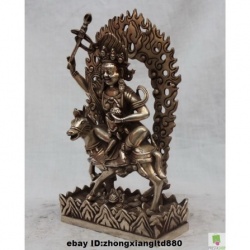The Rainbow Body Phenomenon
The Rainbow Body Phenomenon: Implications for Research and Religion
2:45- 3:30 p.m.
Presentation:
1. The body is the vehicle for spiritual practice, even when it is experienced as a weight, as an obstacle, a fortress vulnerable to temptation, a temporary dwelling - fragile and subject to old age, sickness, and death. Traditions of spiritual practice have reshaped the body to make it a more fitting vehicle for the sacred. These interventions from the outside work to exploit the body’s
symbolic capabilities: circumcision, tattooing, costuming and nudity, hair modifications, piercing, coloring, flagellation, incision, fasting, adopting fixed bodily postures, use of dance (with concomitant bodily development and
costuming), etc. However, some instances of bodily modification seem to arise either spontaneously or in connection with ascetic practices. Some of these modifications seem not to be the result of an external intervention, and would to indicate that some spiritual practices either directly or indirectly produce bodily modifications on a very deep level: stigmata, healing of diseases, incorruption of the body after death, symbolic objects formed of human tissue in the bones or organs (found after death, as in the case of St. Veronica Giuliani or in the cremation of high Tibetan lamas), bodily longevity or “immortality”, bilocation, levitation, resurrection, and the rainbow body or “body of light”. Our research is directed toward the manifestation of the body of light after death. We have been focussing our attention on the case of Khenpo A-chos, a Gelugpa monk of Khams who died in 1998, but we are now in a position to expand the scope of this research.
2. Brief review of our research on Khenpo A-Chos. Remaining to be done: examination of the yellow cloth now to be venerated as a relic at the gompa of Lo ma ga; collecting and analyzing the biography by Lobsang Nyiendrak at Zakhok Shang; collecting the five volumes of the works of Khenpo A-chos also at Zakhok Shang; further study of the practices both Nyingma and Gelug followed by the Khenpo; further interviews with his Dharma friend, Lama A-chos of Yas Che Gompa who also claims to have the ability to manifest the
rainbow body (here we could photograph this yogin manifesting the light body while still alive, since we were able to examine two photos of him doing this last July).
3. The phase of complexity: It is evident that Khenpo A-chos is not the only recent example of manifestation of the body of light/rainbow body after death. Henk Blezer in Holland is now studying the case of the Bon po master, Sharrdza (1859-1935); another Bon po example was underway last Jan-Feb. in central Tibet. Swami Ramalinga of Tamily Nadu manifested the body of light in 1874 and his Tamil Siddha tradition continues to propogate and practice the yogas associated with the manifestation of the body of light. Claims are also made for Taoist masters. Light phenomena after death are also reported for various Christian saints such as Peter Celestine (1215-1296); Sergius of Radonezh (1314-1392); Seraphim of Sarov (1759-1833). There are other accounts of post-mortem manifestation especially in the Eastern Christian traditions. And of course the apparitions of Christ and the Virgin Mary seem also to be connected to the body of light in some way as yet to be determined. In Christianity, the post-resurrectional body not only of Christ but of all the saints is believed to be: impassible, subtle, agile, and luminous (St. Thomas Aquinas, ST Suppl. 85, I); some saints in the Beatific Vision seem already to have these features (the dream appearances of the medical saints Cosmas and Damian, who are said to have performed medical procedures in their light bodies ever since their martyrdom in the late third century).
4. Textual work: Our team is now working on biographical works on the persons who have manifested rainbow body, body of light, and related phenomena. We are also collecting and translating texts related to yogic/contemplative practice in these traditions. In the Tibetan Nyingma and Bon po traditions, our main concern will be for the “trekchod and thodgal” practices of Dzogchen that bear fruition in the rainbow body. There are also a number of philosophical issues to be resolved through dialogue with our practitioner-
informants (see Slava Komarovsky’s summary). We might consider therainbow body as a sub-phenomenon of the Body of Light:
I. Body of Light Phenomena
A. Rainbow body of Great transference
B. Shrinkage of Corpse
C. Normal Corpse, but rainbows.
D. Incorruption?
E. Meditation posture and warm heart
F. Direct ascension in the realm of the sky
II. Literal or “visualized”?
A. Accounts of physical phenomena analyzed critically
B. Visualization practices in which the body is dissolved into light
C. Light phenomena among mystical experiences

